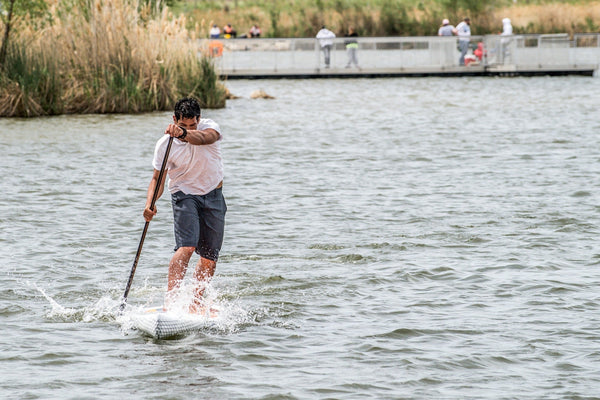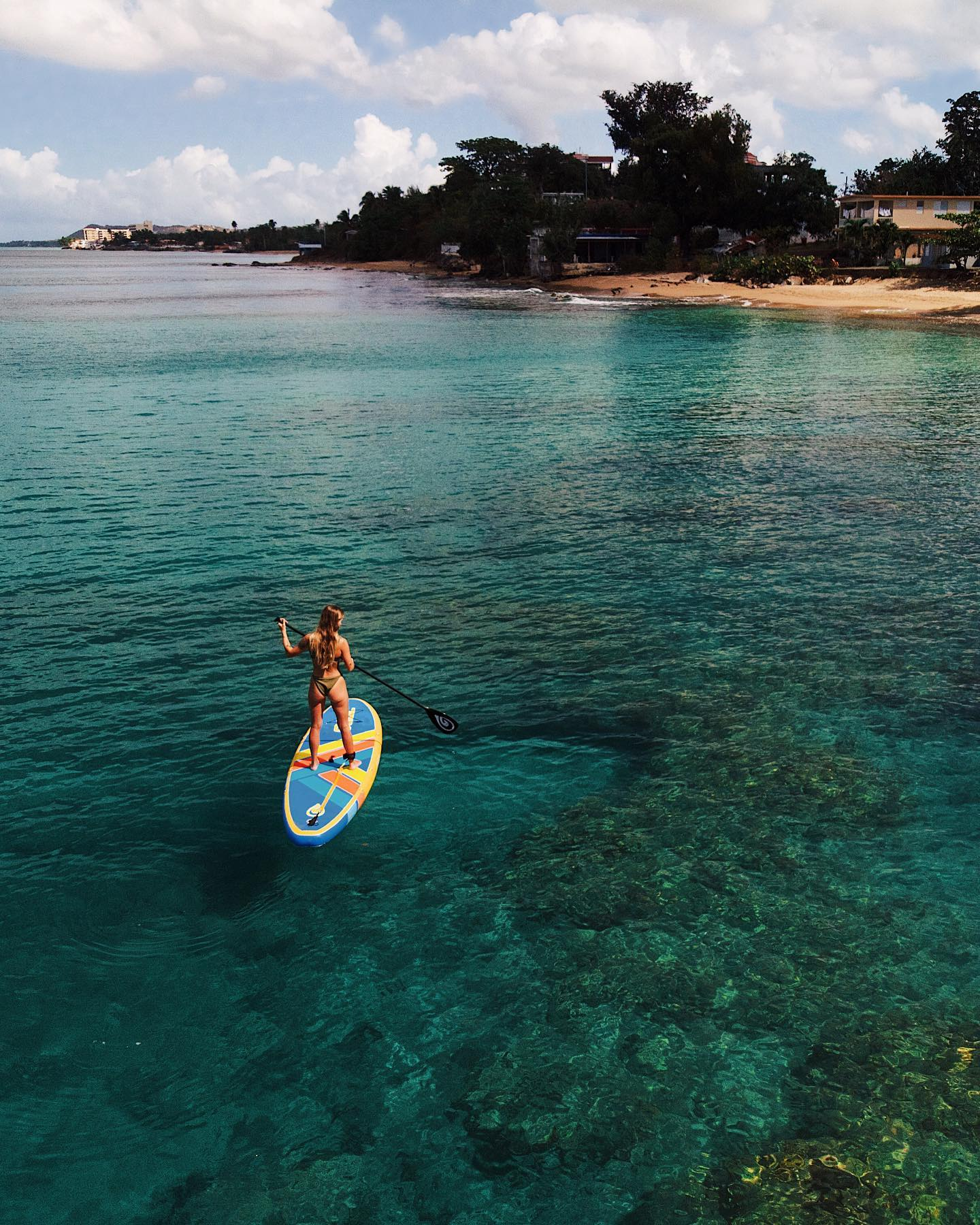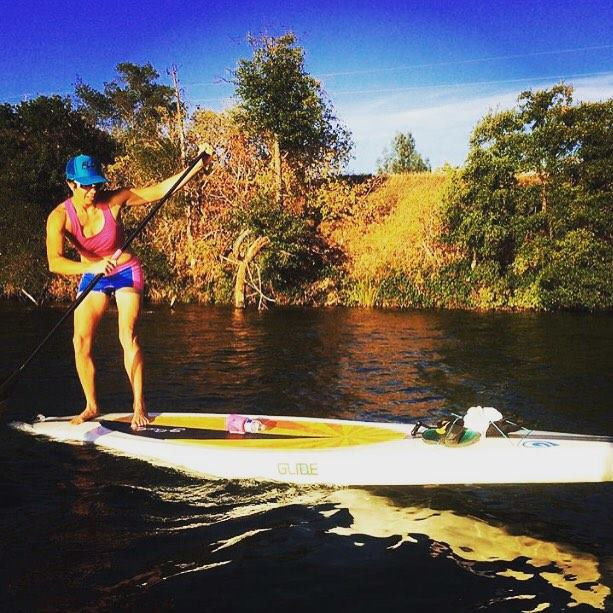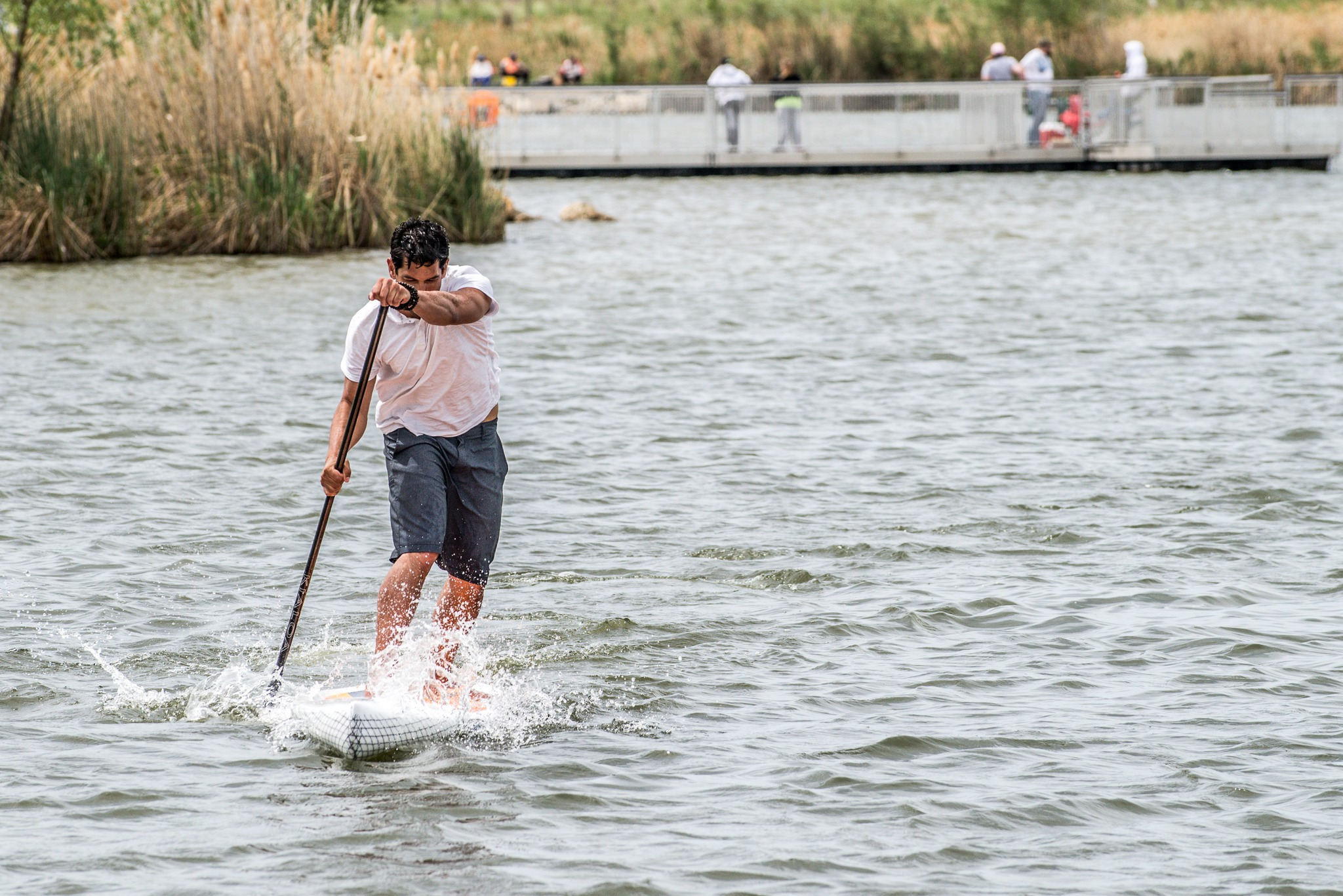
How to Master the Proper SUP Paddle Stroke
Learn the proper SUP paddle stroke—reach, power, recovery—plus cadence, drills, and board-specific tweaks so you paddle straighter, faster, and longer with less fatigue across flatwater, chop, and light surf.
This guide teaches the proper SUP paddle stroke by breaking it into Reach, Power, Recovery and focusing on technique cues that matter: a vertical shaft at the catch, a fully buried blade, torso-driven power, and an early exit at the feet.
You’ll learn how paddle length, blade size, cadence, and board type (touring vs all-around) affect efficiency, plus simple drills—wall drill, silent exits, cadence ladders—to accelerate learning.
Balance and stroke work together: plant before you step, use inside-foot pressure for micro-corrections, and keep eyes up.
The result is straighter tracking, higher sustainable speed, and less fatigue across flatwater, chop, and light surf—while staying safe with the right PFD and leash.
Table of contents
A great paddle stroke is the difference between muscling your way across the water and gliding with control. This guide teaches the proper SUP paddle stroke—broken into Reach, Power, Recovery—and shows how posture, paddle choice, cadence, and board type affect your technique. You’ll also get drills, common mistake fixes, and board-specific tweaks so you can paddle straighter, faster, longer with less fatigue.

Equipment and posture basics
Board and venue matter.
-
All-around/planing boards (wider, shorter) are forgiving and fun. You’ll switch sides more often; keep the shaft vertical and the power phase short.
-
Touring/displacement boards (longer, narrower, pointed nose) reward a quieter, cleaner stroke. Smaller corrections, shorter power phase, and higher cadence feel best.
-
Inflatables vs hard boards: iSUPs ride higher and can handle a slightly shorter paddle for the same technique. Hard boards transmit feedback instantly—great for learning clean catches.
Posture setup (non-negotiable).
-
Feet hip- to shoulder-width, straddling the carry handle; knees soft.
-
Hips stacked over heels; tall chest; eyes on the horizon (not the tip of your board).
-
Relaxed grip on the shaft and T-grip; elbows soft.
-
Blade orientation: the angled/scooped face points away from you at the catch.
Choosing the right paddle (and length)
-
Material: Carbon fiber reduces fatigue and helps maintain smooth cadence and blade control.
-
Blade size: Start mid-small. A slightly smaller blade lets you keep technique clean and cadence steady; you can size up later.
-
Length: As a baseline, ~6–8 inches (15–20 cm) above standing height. Adjust for:
-
Thicker iSUPs: you can go a touch shorter.
-
Racing/speed work: shorter encourages quick exits and high cadence.
-
Surf: shorter for maneuverability.
-
Tall paddlers on narrow touring boards: keep enough length to stay vertical at the catch without shrugging.

-
The anatomy of a proper paddle stroke
1) The Reach (Entry/Catch)
-
Set the shaft vertical by stacking your top hand over the blade.
-
Reach forward comfortably—don’t lunge or round your back. Think “long torso, short arms.”
-
Plant the blade fully (bury it) before you pull. Half-buried blades splash and slip.
-
Cue: “Plant, then pull.” The water is your anchor; your body moves past the blade.
2) The Power Phase (Stroke)
-
Drive from your torso and hips, not just arms. Rotate your shoulders and ribs around a quiet spine.
-
Keep the shaft as vertical as possible to direct force forward instead of sideways (less yaw).
-
Exit around your feet. Pulling past your heels yaws the board and loads your lower back.
-
Quiet water goal: minimal splash at entry and exit; hull feels “calm” even in small chop.
-
Cadence guidance:
-
Distance/easy pace: ~35–45 strokes per minute (SPM).
-
Speed/interval work: up to ~50–60 SPM, only if the catch stays clean and exits stay early.
-
3) The Recovery (Return)
-
Relax the arms as the blade leaves the water; keep the blade close to the board to reduce wind drag.
-
Glide forward with the board—don’t rush. The best recoveries feel smooth and set up a precise next catch.
-
Breathe: try a 2–3 stroke breathing rhythm to keep shoulders relaxed and cadence consistent.
Techniques that immediately improve your stroke
-
Early, clean catch
Focus on burying the blade at the toes with a vertical shaft. Your first inch of movement should feel solid, not splashy. -
Short power phase
Exit near your feet. This one change reduces yaw, keeps you balanced, and protects the lower back. -
Soft hands, strong torso
Grip just firm enough to control the blade. Your core supplies power; your hands steer. -
Shoulder stack
Keep the top hand above the bottom hand early in the stroke to maintain a vertical shaft and efficient force line. -
Quiet exits
If you hear slurping/splashing at release, you’re exiting late or prying outward. Exit sooner, with the blade edge slicing out.
Balance + stroke: make them work together
-
Anchor before you move. Plant the blade first, then adjust your feet or trim. The planted blade is a third point of contact that stabilizes you.
-
Rail pressure micro-cues. Subtle pressure on the inside foot can correct course without giant sweeps.
-
Offset stance (light). In chop or side wind, slide your front foot a half-foot length forward; this adds fore-aft stability without fully going surf stance.
Board-specific tweaks (touring vs all-around vs multi person)
-
Touring/displacement hulls: favor slightly shorter, cleaner power phases and higher cadence. Let the hull glide—don’t overpower it.
-
All-around/planing boards: expect more frequent side switches. Keep the shaft vertical, and use tiny draws to hold line between switches.
-
Multi person boards: communicate cadence and exit timing. The cleanest team exits win; staggered, late exits cause yaw.
Drills (10 minutes that change everything)
-
Wall drill (vertical shaft)
On land, stand by a wall and simulate the catch with the shaft nearly brushing the wall. Teaches vertical setup and top-hand stacking. -
Catch-and-freeze
On water, plant the blade fully and freeze for a half-second to feel a solid anchor—then complete a short power phase and early exit. -
Silent exits, 10 strokes
Count 10 strokes aiming for zero splash on release. Rest, repeat. Sailors call this “quiet water”—it’s free speed. -
Cadence ladders
2 min at comfortable SPM → 1 min at +5 SPM → repeat x4. Only keep the higher rung if the catch stays clean. -
Target tracking
Pick a landmark and paddle 30–40 strokes with minimal course corrections. Use vertical shaft and small inside-foot pressure to stay on line.
Common mistakes and quick fixes
-
Pulling past the feet → Exit at your feet; think “short and clean.”
-
Half-buried catch → Bury the blade fully before applying power.
-
Leaning from the waist → Stack hips over heels; hinge minimally; rotate torso instead.
-
Death-grip on the shaft → Loosen hands; power from the core.
-
Looking down → Eyes on the horizon; your balance improves instantly.
-
Too-wide stance → Hip- to shoulder-width keeps hips mobile and transitions smooth.
-
Late, splashy exits → Exit sooner; slice out with the blade’s edge.
Cadence, heart rate, and sustainable speed
-
Use a metronome app or watch to learn pacing.
-
Most paddlers find efficient distance speed at moderate heart rate with steady cadence (e.g., 38–42 SPM).
-
For speed work, raise cadence in short bouts while keeping clean catches and early exits. If form breaks, back off.
Fine-tuning by conditions
-
Headwind/chop: Shorter, faster strokes with an early exit; step back an inch to keep the nose lively.
-
Downwind/bump: Slightly aft trim; time the catch on the backside, then link bumps with quick, light strokes.
-
Cross-wind: A hint of offset stance; tiny draws and inside-foot pressure hold your line.
Safety, always
Wear a USCG-approved PFD and use the right leash for your venue (coiled for flat/open water; quick-release belt for rivers/current; straight for surf). Check local rules and weather before you launch.
Putting it together: a two-week technique plan
-
Week 1:
-
Session A: Wall drill 5 min → catch-and-freeze 3×5 min.
-
Session B: Silent exits 6×10 strokes (easy paddling between) → target tracking 10 min.
-
Session C: Cadence ladder (2/1 × 4) at clean form.
-
-
Week 2:
-
Session A: Combine silent exits + target tracking (20 min continuous).
-
Session B: Cadence ladder again; keep only rungs with clean catches.
-
Session C: Light chop day—add offset stance and small draws to hold line.
-
Stick with the drills, and your stroke will feel smoother within days—your GPS will show it within weeks.

Final Thoughts on the Proper SUP Paddle Stroke
Mastering the proper SUP paddle stroke isn’t a one-time fix—it’s a habit. Keep the shaft vertical, bury the blade early, drive from your torso, and exit at your feet. Small, repeatable cues beat big, occasional overhauls.
As conditions change, adapt—shorter, quicker strokes for wind and chop; slightly higher cadence for speed; calm, quiet exits for glide on touring boards. Film a few strokes each week, and use simple drills to keep form honest.
FAQs
How long should my paddle be for proper form?
About 6–8 inches (15–20 cm) above your height; adjust for board thickness and venue. Shorter helps cadence; longer risks late exits.
Which way does the blade face?
The blade’s scoop/angle faces away from you; the power face points forward during the catch.
What’s the most important part of the stroke?
A clean, early catch with a vertical shaft. Plant fully, then drive from your torso; exit around your feet.
How do I use my core instead of my arms?
Stack shoulders, hinge slightly at hips, and rotate the torso as the blade anchors. Your arms guide; your body powers.
How often should I switch sides?
Every 5–10 strokes on flatwater; sooner in wind/current. If the board yaws, shorten the pull and go more vertical.
What are common mistakes to avoid?
Overreaching, half-buried blades, pulling past your heels, death-grip on the shaft, and looking down. Fix with early catch, clean exit, and eyes up.
Does board type change my stroke?
Yes. Touring/displacement boards like slightly shorter, cleaner strokes for glide; all-around/planing boards may need more frequent side switches.
What cadence should I aim for?
Distance pace often 35–45 SPM; speed work can reach 50–60 SPM—only if you keep technique clean.
How can I practice efficiently?
Use 5–10 minutes of drills: catch-and-release, silent exits, wall-drills for vertical shaft, and video feedback to check blade angle and posture.
Do fins or paddle materials matter for technique?
A medium touring fin steadies tracking while you refine form. Carbon paddles reduce fatigue and help maintain cadence and blade control.







